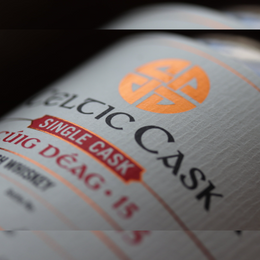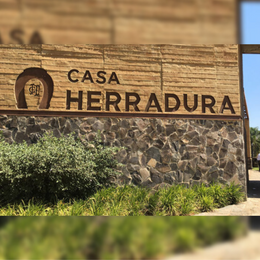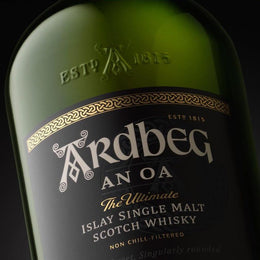 |
Wine and spirits judge, historian and bestselling author. Apart from dealing with sobering world affairs, Joe has been an entertaining educator of wines and spirits and judges at major spirits competitions. He has tasted a range that we could only dream of – from centuries-old ports, Cognacs to many of the world’s oldest whiskies. He also writes on Forbes, The Epoch Times and comments on international politics. Follow Joe on Forbes or his website. |

Current political and economic tension between Mexico and the United States notwithstanding, there is one Mexican export that is being greeted with open arms in the United States: tequila. Since 2002, Mexican exports of tequila to the US have skyrocketed and have been growing at a rate of roughly 5.42% a year. The value of Mexico’s tequila exports to the US in 2016 were just under a billion dollars. The value of distributor and bottler sales to wholesalers was around $2.5 billion dollars while the retail value of US tequila sales, both off premise and on premise, represented a staggering $7.5 billion dollars in turnover. Tequila is now both one of the largest and one of the fastest growing categories of spirits in North America.
Historically, tequila was classified into two broad categories of products: mixtos and 100% agave. Mixtos referred to those tequilas that included up to 49% other sources of fermentable sugar in the liquid, referred to as mosto, that was fermented and then distilled. Typically, these other sources of sugar would have been high fructose corn syrup, molasses or sugar cane juice. Much of this product was exported in bulk to the United States for bottling. In some cases, it would be then reexported to Canada and other international markets.

Mixtos were always unaged and would appear to be either crystal clear or, when a small amount of caramel was added, a light amber color. Mixtos, which literally means mixed in Spanish, were the tequilas that went into billions of ubiquitous margaritas and which, with lime and salt, provided countless tequila shot powered late night extravaganzas.
A minimum of 51% of the fermentable sugars that were used to make mixtos had to be derived from a specific cultivar of Agave tequilana called Weber Azul. This cultivar is larger and blue-gray in color compared to the smaller and green colored Agave tequilana. Tequila is produced by removing the heart (piña) of the plant and converting the starch, called inulin, in the piña into fermentable sugars. Mexico has more than 150 species of agaves out of the 200 that have been identified in the Americas. The highlands of Mexico are believed to be the geographic region were the agave evolved. Although often mistaken as being related to cactus, agave is related to yuccas and aloes.
Mixtos are typically labeled as Oro/Gold, Joven/Young or Joven Abocado/ Young and Smooth. In the latter case, 100% Agave tequila is sometimes added to the mixto. The Consejo Regulador del Tequila (CRT), the governing body that oversees tequila production permits the addition of small quantities of sugar syrup, glycerin and natural oak tree extracts to improve the smoothness of the tequila. Such additives are also allowed in the production of 100% agave tequila, but they are limited to not more than a combined weight of 1% of the product and are only intended to standardize the characteristics of the bottling. In recent years, the industry has moved away from the term mixto in favor of using tequila to refer to mixtos and 100% agave tequila to refer to tequilas that are produced exclusively from agave sugars.
The other type of tequila produced is 100% Agave tequila. Unlike mixtos, these tequilas are only allowed to have fermentable sugars obtained from the blue agave (Agave angustifolia subsp. tequilana var Weber Azul). Historically some of these tequilas were also aged for varying periods of time in oak.
Unaged tequilas were called Blanco/White or Plata/Silver. Typically, they are bottled immediately following distillation. In some cases, they would be stored in stainless steel tanks for several weeks and allowed to marry with the spirit from other distillations before being bottled. In a few cases, they might be aged in oak barrels for a period of two months or less. The brief oak aging enhances the tequila’s smoothness.

Tequila that was aged on oak casks for period of two months to eleven months is called Reposado/Rested. The CRT regulations (normas), specify that tequila must be aged in oak. Any oak variety is allowed although only white oak is suitable for aging. Typically, this is usually American white oak, (Quercus alba) in the form of previously used Bourbon barrels from the US. Mexican white oak, (Quercus polymorpha) was used historically, but the variety has now become quite scarce in Mexico.
Añejo/Aged, is tequila which has been aged in sealed oak barrels for a minimum period of one year to as much as three years. The CRT requires the barrels to have a maximum size of 600 liters although in practice most producers use either a standard American barrel of 200 liters or 300-liter Cognac barrels. These tequilas are darker, usually a dark gold to rich amber. They will show pronounced wood derived flavors including hints of vanilla, cinnamon and cloves, as well as slight sweet notes ranging from brown sugar to butterscotch and caramel. They are smoother and silkier with noticeably more weight on the palate. A good example of this category is Don Julio Añejo, Avion Añejo or Sauza’s Hornitos Añejo.
Extra Añejo/Extra or Ultra Aged is a new category of tequila, pioneered by Casa Herradura, that has gained prominence over the last several decades. The category was only recognized officially in 2006 and consists of tequilas that are aged for a minimum of three years. There is no maximum aging limit, although from a practical standpoint most tequilas reach their peak at somewhere between 3 and 5 years of aging. Ultra-aged tequilas exhibit even more wood influence including nuances of chocolate, coffee and even a Crème Brule note.
They are rich in body with significantly more weight on the palate and are often referred to as “sipping tequilas”. In recent years, distillers also have been experimenting with alternative cask finishing, using casks that previously held sweet wines like sherry or port to add a broader range of flavors to their tequila. Good example of this category includes Herradura Añejo or Patron Piedra. Patron’s sherry cask finished tequila is a superb expression of the use of alternative cask finishing but is virtually impossible to find.
Super-premium tequilas sometimes referred to as “Reserva de la Casa”, “Edicion Limitada” or “Reserva de la Familia” are usually limited edition, extra añejo tequilas that have been singled out for having exceptional quality. Often, these are specific barrel selections or even single barrel bottlings. Hand-picked reposado tequilas can also be bottled as a super-premium “Gran Reposado”. This is not a specific aging category that is recognized by the CRT but is allowed at the discretion of the producer.

The term “Reserva de la Familia” /Family Reserve or Family Bottling did once refer to bottlings reserved for the distillery owner’s family and friends but has now become more of a marketing term. Jose Cuervo’s Reserva de la Familia began as a private family bottling but has since become a brand applied to several of the distillery’s premium bottlings. Sauza bottled a similar product; Casa Sauza XA Extra Añejo Edicion Limitada which was an extra añejo aged for three years in a combination of new and used American oak barrels. This is no longer available except in secondary auction markets. Other good example of this category includes Herradura’s Selection Suprema Extra Añejo or Patron’s Burdeos.
The newest, although still unofficial, category of tequila is Cristalino. The category was developed by Don Julio’s Master Distiller Enrique de Colsa and released in 2012 as Tequila Don Julio 70 Añejo Claro to mark the 70th anniversary of the founding of the distillery by Don Julio Gonzalez. The spirit is an 100% añejo tequila that has been matured for 18 months in American oak barrels. Once matured, the tequila is filtered multiple times through a proprietary activated carbon process to remove its color. This was the first time that the process was applied to an añejo tequila. The CRT does not yet recognize Cristalinos as a distinct tequila category. They are identified based on their aging as either Cristalino Añejo or Cristalino Extra Añejo. In some cases, the designation claro/clear is also incorporated into the label.
Reposado tequilas can also be filtered and packaged as a Cristilano. Maestro Dobel was the first tequila producer to produce a crystal clear, filtered reposado. It has since released Maestro Dobel Diamante, a blend of Reposado, Añejo and Extra Añejo that has been filtered to create a crystal-clear liquid. Clear, aged tequilas have also been released by Qui Tequila (the first clear Extra Añejo), Casa Dragones, Milagro Unico, Lunazul Primero, Herradura Ultra, and Alacram Cristal Tequila among others.
The resulting crystal clear spirit retains the typical aromas and flavors of an añejo tequila and offers exceptional smoothness. The filtering process removes many of the overt wood influences, especially the oak and wood spice notes. The resulting spirit has a slightly resinous, somewhat piney note reminiscent of sandalwood. The agave notes are more subdued as well and are more herbal in character with hints of licorice, mint and anise. There is a noticeable, wood derived sweetness, with aromas of cotton candy and marshmallow.
Cristalino has become the fastest growing segment of Mexico’s domestic tequila market. More significantly, sales of Cristalino tequila skewed heavily towards women. For the first time ever in Mexico, more women than men are now consuming tequila. Cristalino began to appear in the US in 2015 and is only now starting to make significant inroads.
Another category of tequila flavored beverages includes a variety of tequila based liqueurs and flavored tequilas. Such beverages are made both with mixto and 100% agave tequila. Flavored tequilas have not shown much sales traction with one exception. Tequila seems to have an affinity for coffee and marries very well with coffee flavored liqueurs. See for example, Avion Espresso or Patron XO Café, both outstanding. There are also a variety of tequila based cream liqueurs. These resemble Irish Cream liqueurs but use tequila instead of whiskey. Among the better-known expressions are Orendain Crema de Membrillo, 1921 Tequila Cream and Cuervo Agavero. The latter is flavored with Damiana flowers from the mountains of Mexico and is purported to be an aphrodisiac.
Tequila is a case study of what the spirits industry refers to as premiumization, drink less but better. Although in the case of tequila it has been a case of drink more and better. Historically, the bulk of Mexican tequila exports to the US were mixtos, what is now referred to as simply tequila. According to the Distilled Spirits Council in the US (DISCUS), in 2002, approximately 7.2 million cases of tequila were shipped to the US. Roughly 83% of those exports were mixtos/tequila in bulk form for bottling in the US. The balance, the equivalent of 1.2 million cases, was shipped in bottled form and consisted primarily of 100% agave tequila. By 2016, total shipments had more than doubled to just under 15.9 million cases but the percentage of bulk exports had dropped to 46%.
According to the CRT, for the first time, in 2016, production of 100% agave tequila surpassed the production of tequila, 144.3 million liters versus 128.9 million liters. Exports of 100% agave tequila to the US were 81 million liters in 2016 while those of mixtos were 80 million liters. Exports of 100% agave tequila are expected to continue to grow faster than tequila. Until now, Mixtos/Tequila has always been far more popular in the US than in Mexico. Most Mexicans prefer to drink 100% agave tequila.
According to DISCUS, between 2002 and 2016 Mexican exports on tequila, both mixtos and 100% agave tequila, to the US increased by 120% by volume. Shipments of high end premium and super premium tequilas, where most 100% agave tequilas are priced, however, increased by 292% and 706% respectively. In dollar terms, the increase in sales was even more pronounced. Between 2003 and 2016, the value of Tequila shipments to wholesalers in the United states increased from $962 million to $2.49 billion, an increase of 158%.

The increase in the high-end premium and super premium categories was even more pronounced. Per DISCUS, high end premium tequila sales increase from $73 million to $297 million while super premium sales increased from $140 million to $1.038 billion. The value of the super-premium category now exceeds the value of the Tequila industry’s entire US exports in 2003. In percentage terms the increases were 308% and 640% respectively. Paradoxically, the average price of mixtos declined by around 25% during this period, mostly as a result of the proliferation of low cost, custom store brands.
The US tequila market represents 80% of Mexican tequila exports. Volume wise, it is two times the size of the domestic market but in dollar terms it is roughly four times the size of the Mexican market. Elsewhere in the world, tequila sales continue to show strong traction with the United Kingdom, Germany, and Japan emerging as strong markets. China, once a laggard, has come on strong and is expected to reach sales of $100 million by 2018, making it second only to the US in size.
Despite its growth in the US market, tequila sales represent only 7%-8% of total spirit sales. By comparison, Vodka has a 34% share, whiskey has a 24% share and rum has a 12% share. Worldwide, tequila sales represent only 1% of the global spirits market. The tequila industry has impressive growth potential, both worldwide and even in the US where it already has a well-established market presence. Only about 25 million Americans drink tequila. By comparison, vodka has 35 million distinct drinkers each month.
The tequila industry has had an impressive period of growth over the last two decades but is only now hitting its stride. With continued improvement in the quality of its production, more nuanced and complex maturation processes and more sophisticated marketing, it has considerable growth ahead of it until it assumes its well-deserved share of the global spirits market. Salud!
By Joseph V. Micallef
Joseph V. Micallef is a judge and commentator on food, wines, spirits and travel. He is also a historian, best-selling author, keynote speaker and syndicated columnist As a journalist and former war correspondent he has written on an eclectic mix of topics from wines, spirits and travel, to military history and world affairs. For 30+ years he was the CEO and Senior Producer of a media company.
Joe has also been a judge for a variety of international wines and spirits competitions, including the International Wines and Spirits Competition, World Drinks Awards, World Whisky Awards, San Francisco International Wine Competition, American Distilling Institute Craft Spirits Awards, and the Irish Whiskey Awards. Along with judging, he spends his spare time making wine in Oregon.
He holds the Diploma in Wines and Spirits from the Wine and Spirits Education Trust (London). He is also a member of the Advisory Board of the Council of Whiskey Masters. The Advisory Board’s two dozen members are widely considered the leading experts on whisky in the world.
He has spoken at a variety of professional venues, including the Institute of Strategic Studies (London), the NATO Defense College (Rome), the World Future Society and a large number of universities, military and other organizations on a variety of topics dealing with military and current affairs. He has also appeared as a commentator on a variety of cable news networks.
His recent books include, Scotch Whisky: It’s History, Production and Appreciation, Understanding World War I: A Concise History (part of a 12 episode made for television documentary), and Islamic State: Its History, Ideology and Challenge. Additional books on Tequila and on Italian Wines are forthcoming.
He has written, directed, and produced dozens of documentaries on military history and current affairs.
Joe is also an opinion columnist for The Epoch Times where he writes about national security and international affairs, and a contributor to Forbes where he writes about wines, spirits and travel to the dusty corners of the world. In addition to writing, he is also the International Editor for the Irish Whiskey Magazine.
He has spent more than 20 years judging wines and spirits and lecturing and writing about them, and looks forward to many more. Grab a drink with him at the bar if you have the chance – suffice to say, he's not your average Joe.







